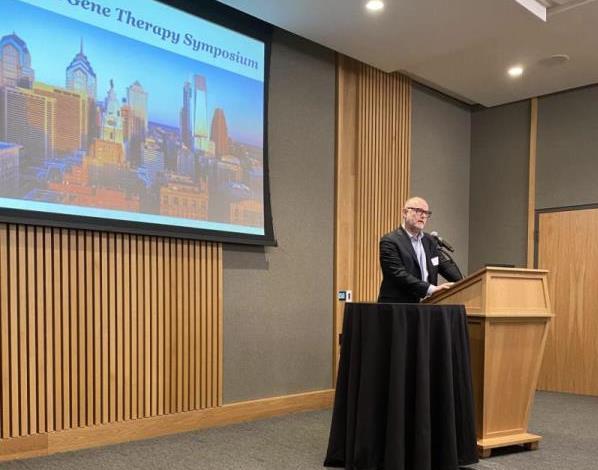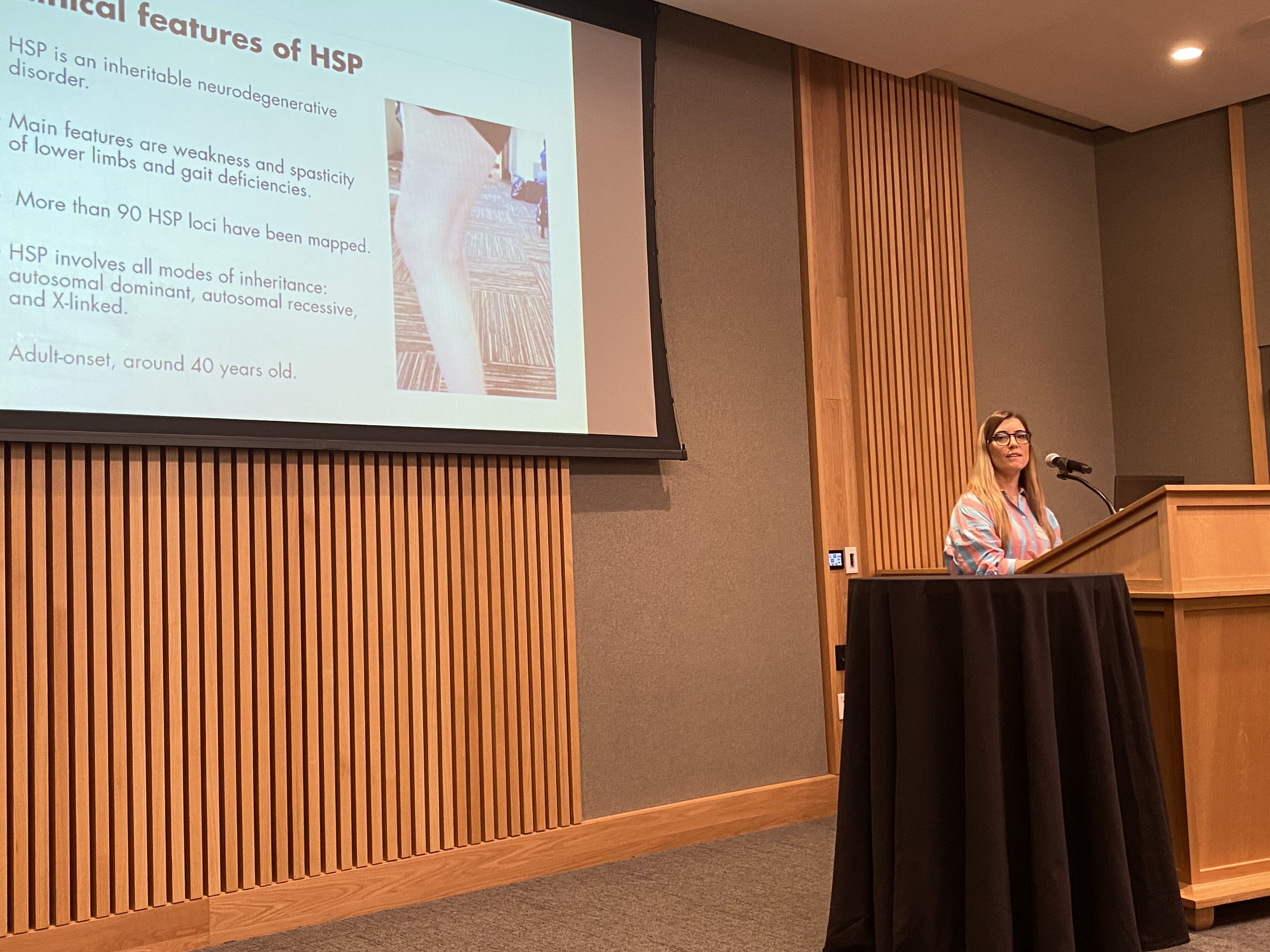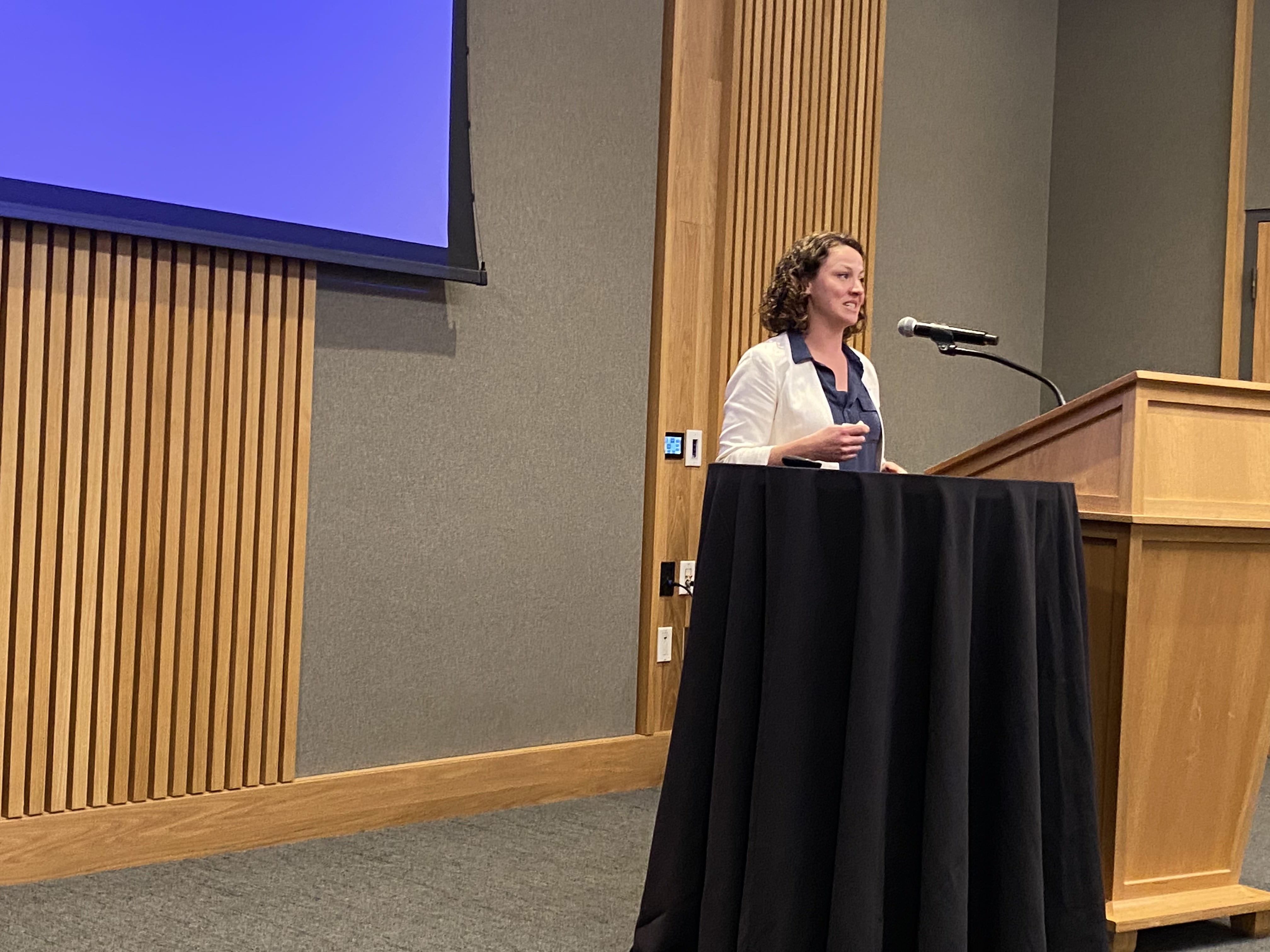Drexel Researchers Share Breakthroughs in Cell and Gene Therapy
By Natalie Kostelni

Faculty across Drexel are applying groundbreaking cell and gene therapy research to treat a broad array of illnesses including neurodegenerative disease, idiopathic pulmonary fibrosis and HIV, as well as across a spectrum of debilitating injuries to the spinal cord and kidneys.

Researchers from across Drexel gathered to highlight their work in cell and gene therapy during a symposium held May 4. Cell and gene therapies are related fields of biomedical research that hold promise for ground-breaking medical treatments and cures for genetic and acquired diseases.
The gathering was part of pilot activity related to Drexel’s Areas of Excellence and Opportunity initiative led by the Office of the Provost and evolved from the University’s Strategic Plan. Cell and gene therapy is a focus area of the AEO in Health Innovation.
As Philadelphia’s life sciences sector continues to grow, Drexel is at the forefront of cell and gene therapy research, education and manufacturing.
“Drexel is uniquely positioned to drive innovation in cell and gene therapy because of the multidisciplinary, cutting-edge research underway across the university,” said Aleister J. Saunders PhD, who oversees research and innovation for the University. “Drexel routinely creates new and innovative breakthroughs in healthcare that improve the lives of people and transform the way we approach healthcare. Our commitment to interdisciplinary collaboration and partnering with industry distinguishes Drexel and will lead us to continue to have a lasting impact on healthcare.”

The University has been instrumental in helping to establish University City as an Innovation Neighborhood by partnering in the development of uCity Square and Schuylkill Yards, which cater to startups from a range of industries but many of which are concentrated in life sciences. Drexel is also involved in two major life sciences developments on campus.
Drexel has also established a new interdisciplinary course designed to introduce first-year students to cell and gene therapy, the science behind it and various aspects of it.
“We want to build an active research community around cell and gene therapy. This event helped everyone from a range of disciplines across the University make connections with their colleagues. It’s those chance meetings that can sometimes lead to the next big breakthrough,” said Kara Spiller, PhD, professor in the School of Biomedical Engineering, Science and Health Systems.
Here are five takeaways from the event:
1. Researchers who presented spanned diverse disciplines and drew from the School of Biomedical Engineering, Science and Health Systems, College of Medicine and College of Engineering, underscoring the vital role of interdisciplinary collaborations in advancing these innovative therapies.
“The next phase of research in this area will require all of their input, and we must capitalize on their diversity of expertise to make innovative new research directions and educational initiatives,” Spiller said.
That sentiment was shared by other Drexel researchers who presented, many of whom acknowledged that their work was the result of collaboration with colleagues and is a vital part to making inroads on their research.
“I still have so much work to do and hope to get a lot of feedback from the audience,” said Emanuela Piermarini PhD, who focuses on gene therapy for neurodegenerative disease. “We are really looking for collaboration.”
2. Drexel’s long history of partnering with industry is essential to facilitate cell and gene therapy discoveries. Industry partners focused on life sciences need connections to academic research labs, and researchers need access to industry to support and scale discoveries. “My conversations with industry changed my approach to what I was doing in the lab,” Spiller said.
3. The growth in Philadelphia’s life sciences industry and, specifically within cell and gene therapy, helped lay a foundation for Drexel to build on its deep partnerships on a variety of fronts. Through the Drexel Solutions Institute, Drexel is currently working on several projects with life sciences companies that include creating additional new curricula and experiential learning opportunities as well as forming best practices for manufacturing and skills training. This has also meant Drexel taking an active role in shaping an ecosystem that supports cell and gene therapy.

4. Cost, time and personalization of cell and gene therapies, which work for a single patient and often take weeks to manufacture, are among the challenges facing the industry. Drexel researchers and industry partners are working to discover cures that can be manufactured quickly, work for dozens of people and eventually be conveniently delivered in a doctor’s office.
5. Researchers and others in the Drexel community involved in cell and gene therapy are passionate and dedicated to this field. Many expressed a desire for the symposium to become an annual event and support new initiatives surrounding this area's expansion.
“This event showcased the amazing work that is underway at Drexel,” Spiller said. “We’re looking forward to continuing to build this community and meet again to hear from our colleagues working in this field.”
The symposium was co-sponsored by the Office of the Provost, the Office of Research & Innovation and Drexel Solutions Institute.